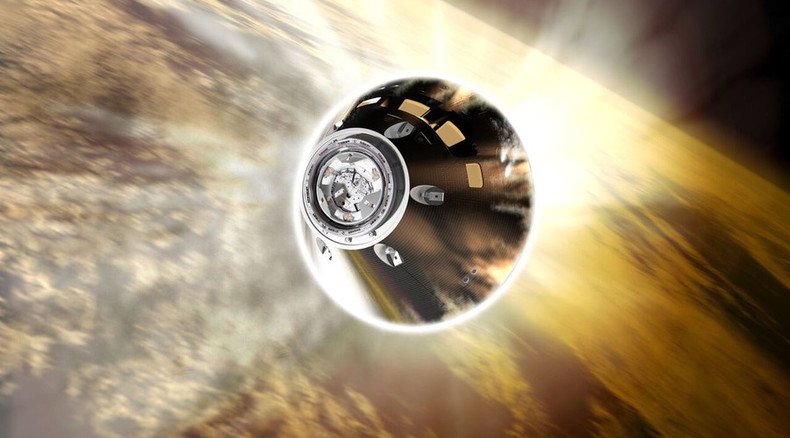NASA’s Orion spacecraft gets new silver heat shield for deep space trips

NASA is upgrading its Orion spacecraft, a deep-space capsule which may one day take men all the way to Mars, with a new silver heat shield. The metallic-based coating will protect Orion from “the harshest set of conditions yet” during its next mission.
“Orion’s thermal protection system is essential to successful future missions,” the space agency explained.
The spacecraft is set to go back to space for more than three weeks in 2018. This would be Orion’s second mission since 2014, when it successfully completed a historic four-and-a-half-hour-long, double-orbit journey. In its next return-trip to Earth, scheduled to come after a three-week space mission, Orion is expected to encounter hotter and faster conditions than on its last flight.
Engineers refine thermal protection system for @NASA_Orion’s next mission: https://t.co/n7APZmNDdo#JourneyToMarspic.twitter.com/23L3mgsOlg
— NASA (@NASA) November 20, 2015“While the spacecraft encountered speeds of 30,000 feet per second during Exploration Flight Test-1 and temperatures of approximately 4,000 degrees Fahrenheit, it will experience a faster return from lunar velocity of about 36,000 feet per second,” NASA said about Orion’s next flight.
This new silver, metallic-based thermal control coating will be crucial for future astronauts, who take Orion to return to Earth from deep space destinations. Its main purpose is to retain heat when Orion is heading to space and going through cold temperatures, and protect it from high temperatures when the spacecraft is exposed to the sun.
“You’re trying to hit this sweet spot because when you’re looking at the sun, you don’t want to get too hot, and then when you’re not looking at the sun and instead in darkness, you don’t want to lose all the heat that the spacecraft generates,” said John Kowal, NASA’s thermal protection system lead for Orion.
The upgraded protection system consists of a main heat shield and the grid of tiles known as the back shell. This time the heat shield has been constructed from about 180 blocks instead of having one monolithic outer layer.
The thermal control coating will help the back shell maintain a temperature between -150 and 550 degrees Fahrenheit (-101 and 287 degrees Centigrade).
NASA delays first manned flight for its Mars spacecraft until 2023
http://t.co/A20kM2nO7Gpic.twitter.com/70bNLMGbBK
— RT (@RT_com) September 17, 2015In 2018, Orion will be sitting atop the Exploration Mission-1 (EM-1) Space Launch System rocket.
NASA plans to put astronauts on board Orion in 2021 for deep space exploration, but the primary plan is to use Orion for getting humans to asteroids and Mars by the 2030s.












